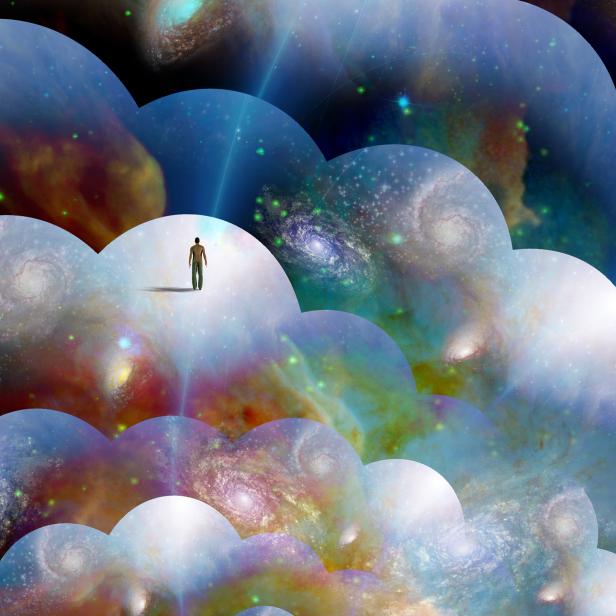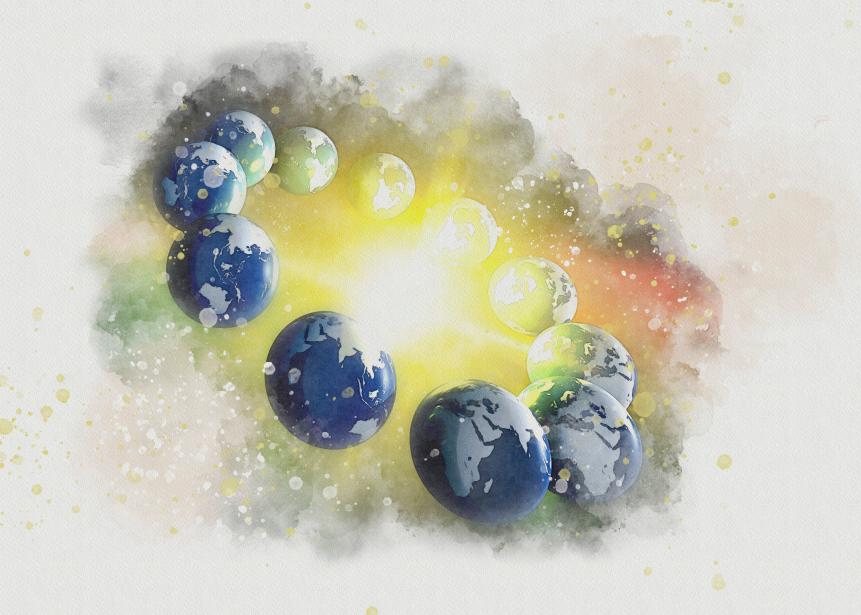
bestdesigns
What is the Multiverse?

What if there was another you, somewhere out there, doing all the things you wished you could’ve done? What if there was a multiverse, where all the possibilities and choices of our lives became real? It seems like just another fantasy of science fiction, but it’s closer to reality than you might think.
Several versions of a generic “multiverse” concept appear in physics, but I’d like to talk about just one, which I personally believe is the one that has the closest connection to known physics and the best shot at actually being tested.
Let’s start off our discussion of the multiverse with…just the Universe. By definition, it’s everything. Literally everything. The Universe contains the entire expanse of all-there-is in both time and space. If it’s a thing, it’s in the Universe. That’s it.
By contrast, the multiverse theory says that our Universe is not alone. Instead, it’s just one bubble among many (perhaps infinitely many) other Universes. Each one living their own lives and doing their own things, completely and totally and permanently separated from each other.
Curiosity Daily Podcast: Dirty Disinfectant, Hot Iron Blobs, Infinite Versions of You
Today, you’ll learn about how some cleaning products in your kitchen may be terrible for the environment even though they’re labeled “green,” hot blobs of iron playing games with Earth’s magnetic field, and how some far-out theories in physics predict there are infinite versions of you.
But how can you make a multiverse if the Universe is already all the things?
The answer lies in the earliest moments of the Big Bang. Cosmologists don’t fully understand what happened when our Universe was incredibly young, because the physics is just way too complicated, but they do suspect something extraordinary happened just a fraction of a second after the Big Bang: the Universe got big. Really, really big, really, really quickly.
This event is called “inflation” and in an incredibly brief amount of time, our Universe expanded in size by roughly a factor of 1050. That already is quite fascinating, but one of the strangest parts of inflation is that it just…sorta stopped, and since then our Universe has expanded at a much more leisurely pace.
But what if it didn’t stop? What if that period of insanely fast expansion kept going? Well, then life as we know it would be impossible because the Universe would grow too large too quickly for stars and planets to form. But what if inflation just stopped here, in this patch? What if what we call “the Universe” is just a tiny bubble that broke off and slowed down, while the rest of space continued on in its frenzied rate of expansion?

VICTOR HABBICK VISIONS/SCIENCE PHOTO LIBRARY
This is the multiverse. Inflation never, ever stops, and all of space just keeps on expanding forever, but pieces of it pinch off, forming their own isolated bubbles. Each individual bubble would be an entire “Universe” (technically, we should redefine “the Universe” to mean “all the bubbles, including our own” but to prevent confusion the theorists behind this idea coined the term “multiverse”).
In this picture, inflation never stops and the individual Universes just keep popping out, very quickly reaching an infinite number of Universes, all separated by extremely vast expanses of space. Each individual Universe starts with the same basic ingredients but in a new arrangement, like the random starting positions of a video game: in one Universe an atom may be over here, while in another Universe it may be over there.
With an infinite number of Universes to play with, every single possible combination becomes realized. That means that in the multiverse picture (if it’s true), there is a version of you doing all the things you wished you did in your life.
If it helps, they may be regretting those choices, and wishing they were you.
Dive Deeper into the Cosmos
Journey Through the Cosmos in an All-New Season of How the Universe Works
The new season premieres on Science Channel and streams on discovery+.





















